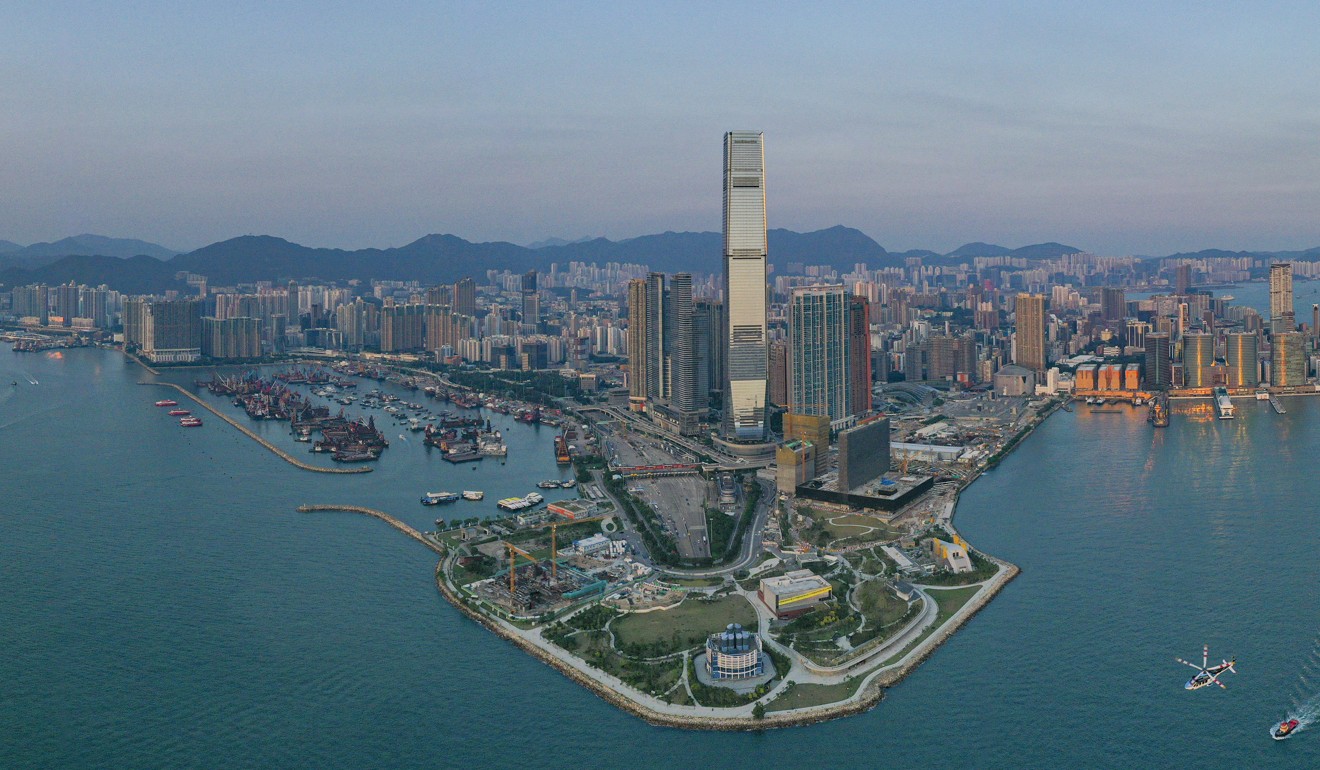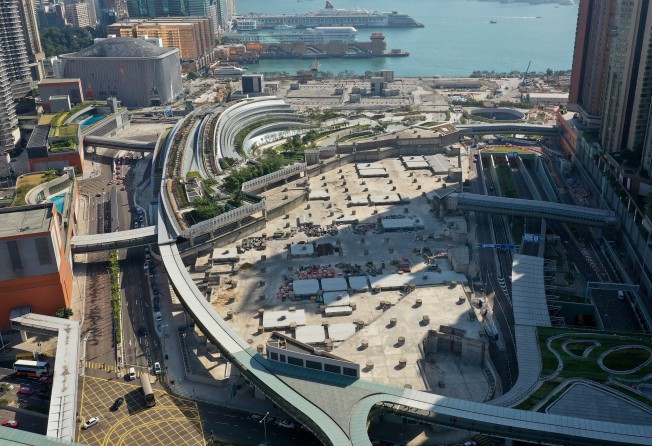
Sun Hung Kai’s record US$5.43 billion purchase of West Kowloon site shows long-term confidence in protest-hit city
- The development above West Kowloon high-speed railway station will add some 3 million sq ft of high-quality office space and bring the area closer to becoming a thriving business district
- The highly demanding project will require an estimated investment of more than HK$60 billion

When Sun Hung Kai Properties (SHKP) paid a record HK$42.23 billion (US$5.43 billion) in November 2019 for a site atop West Kowloon station, it was undoubtedly the most eye-catching land transaction of the year because of the sheer size of the development and price tag.
What made it interesting was that the tender was conducted at a time when political and economic uncertainties surrounding Hong Kong were intensely high. Despite a successful sale, the result was considered “disappointing” as much of the focus was on the small number of bids and per square foot value of HK$13,345, which stood near the low-end of “market expectations”.
However, if we look beyond what is clouding Hong Kong today, confidence of investors with a long-term view of the city appears to have remained relatively unaffected.
To begin with, the project is a highly demanding undertaking, with more than 3 million sq ft in floor area and a projected total investment of more than HK$60 billion. Therefore, it was not a surprise that only three bids were submitted for the site. Two of them were from single bidders and the third was from a five-party consortium. After all, there are only a handful of developers who have the expertise and financial capacity to take on a project of such scale. The mere fact that a developer commits such a hefty amount in Hong Kong is itself a strong vote of confidence in the long-term prospects of the city.
SHKP has begun to introduce strategic investors to participate in the development – the first being an investment company owned by the Kwok family, SHKP’s largest shareholder. As SHKP continues to seek other strategic investors, and if overseas investors are brought into the project, it will be further testament that confidence in Hong Kong’s long term prospect is not limited to home-grown players.
As for the suggestion that the accommodation value (per square foot price) is low since it is near the low-end of market expectations, we believe there is an objective way to gauge.

We note that the MTR travel time from Central station provides a good indicator for achievable rent and capital value of an individual office asset. The future office buildings on the Express Rail Link site that connects Hong Kong with mainland china will be just over 20 minutes via the MTR from Central (including walking time). The estimated capital value is very much in line with expectations, compared with current pricing of existing assets and other recent land sales, if only travel times were used to determine value.
From a long-term supply perspective, it is imperative that Hong Kong continues to see a healthy pipeline of office supply to address increasingly sophisticated accommodation requirements of occupiers. With only 1.8 million sq ft of new supply per year over the past decade, and vacancy hovering at extremely low levels, the options for many corporate tenants have been limited. This situation is not going to improve any time soon, with upcoming supply being minimal, especially in core locations.
Between 2020 and 2023, office supply will amount to about 2 million sq ft per year. The supply in core sub-markets will be even tighter – a mere 15 per cent of new supply. No wonder that whenever a high-spec office tower is built in a reasonably convenient location, pre-commitment is typically high. Besides cost consideration, the aspiration for quality workspace has motivated many companies to relocate.
The high-speed rail link development will add some 3 million sq ft of office space in the West Kowloon area, on top of 1.7 million sq ft in International Commerce Centre. This will be a welcome addition of office space to the location. Not only will it offer more high quality accommodation options for occupiers, but it will also bring the West Kowloon area closer to the needed critical mass to be a true and thriving office node. Adding this to other potential commercial developments in the West Kowloon Cultural District, office space in this location is likely to be highly sought after as the district matures.
Indeed, the ease of transport in West Kowloon is unrivalled given the surrounding infrastructure. The precinct has direct connectivity to the high-speed rail, Airport Express line and the MTR Tung Chung line, as well as motorways to Hong Kong Island, the airport and other border links with China. This node is likely to become a key gateway connecting Hong Kong with the rest of the Greater Bay Area. As companies set up functional offices across various hubs in the GBA, the West Kowloon node would be a natural location of choice.
Nelson Wong is the head of research at JLL for Greater China and Hong Kong